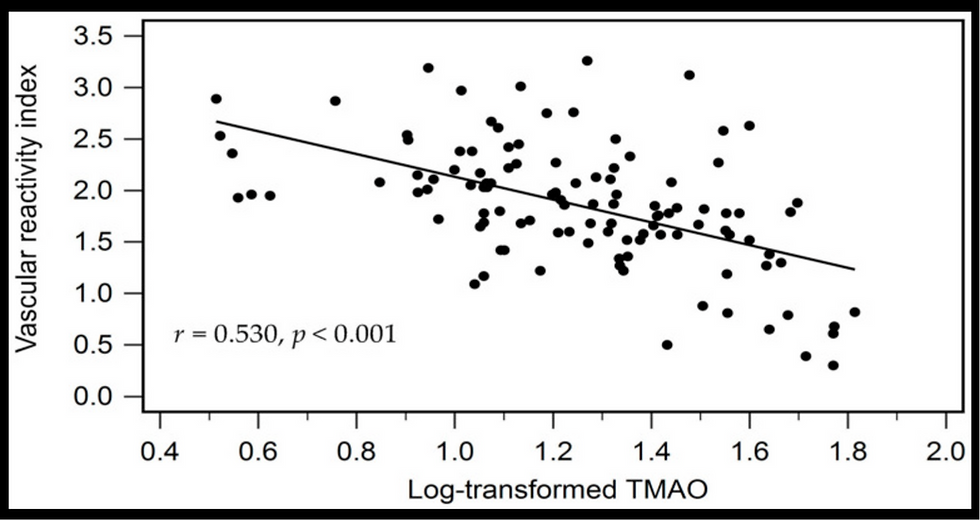Non-Pharmacologic Treatments of Endothelial Dysfunction – New publications
- heartlung
- Jan 16, 2023
- 3 min read
Am J Physiol Heart Circ Physiol. 2017 Sep 29: Endothelial Cell Senescence with Aging in Healthy Humans: Prevention by Habitual Exercise and Relation to Vascular Endothelial Function. Rossman MJ1, Kaplon RE2, Hill SD2, McNamara MN, Santos-Parker JR3, Pierce GL4, Seals DR3, Donato AJ5. Author information 1University of Colorado Boulder Matt.J.Rossman@gmail.com.2University of Colorado.3University of Colorado Boulder.4University of Iowa.5University of Utah. Abstract Cellular senescence is emerging as a key mechanism of age-related vascular endothelial dysfunction, but evidence in healthy humans is lacking. Moreover, the influence of lifestyle factors such as habitual exercise on endothelial cell (EC) senescence is unknown. We tested the hypothesis that EC senescence increases with sedentary, but not physically active, aging and is associated with vascular endothelial dysfunction. Protein expression (quantitative immunofluorescence) of p53, a transcription factor related to increased cellular senescence, and the cyclin dependent kinase inhibitors p21 and p16 were 116%, 119%, and 128% greater (all P<0.05), respectively, in ECs obtained from antecubital veins of older sedentary (n=12, 60±1 yrs) vs. young sedentary (n=9, 22±1 yrs) adults. These age-related differences were not present (all P>0.05) in venous ECs from older exercising adults (n=13, 57±1 yrs). Furthermore, venous EC protein levels of p53 (r=-0.49, P=0.003), p21 (r=-0.38, P=0.03), and p16 (r=-0.58, P=0.002) were inversely associated with vascular endothelial function (brachial artery flow-mediated dilation). Similarly, p53 and p21 protein expression were 26% and 23% higher (both P<0.05), respectively, in ECs sampled from brachial arteries of healthy older sedentary (n=18, 63±1 yrs) vs. young sedentary (n=9, 25±1 yrs) adults; age-related changes in arterial EC p53 and p21 expression were not observed (P>0.05) in older habitually exercising adults (n=14, 59±1 yrs). These data indicate that EC senescence is associated with sedentary aging and is linked to endothelial dysfunction. Moreover, these data suggest that prevention of EC senescence may be one mechanism by which aerobic exercise protects against endothelial dysfunction with age. Copyright © 2017, American Journal of Physiology-Heart and Circulatory Physiology J Am Heart Assoc. 2017 Sep 28;6(10). pii: e002218. doi: 10.1161/JAHA.117.002218. Meditation and Cardiovascular Risk Reduction: A Scientific Statement From the American Heart Association. Levine GN, Lange RA, Bairey-Merz CN, Davidson RJ, Jamerson K, Mehta PK, Michos ED, Norris K, Ray IB, Saban KL, Shah T, Stein R, Smith SC Jr; American Heart Association Council on Clinical Cardiology; Council onCardiovascular and Stroke Nursing; and Council on Hypertension. Abstract Despite numerous advances in the prevention and treatment of atherosclerosis, cardiovascular disease remains a leading cause of morbidity and mortality. Novel and inexpensive interventions that can contribute to the primary and secondary prevention of cardiovascular disease are of interest. Numerous studies have reported on the benefits of meditation. Meditation instruction and practice is widely accessible and inexpensive and may thus be a potential attractive cost-effective adjunct to more traditional medical therapies. Accordingly, this American Heart Association scientific statement systematically reviewed the data on the potential benefits of meditation on cardiovascular risk. Neurophysiological and neuroanatomical studies demonstrate that meditation can have long-standing effects on the brain, which provide some biological plausibility for beneficial consequences on the physiological basal state and on cardiovascular risk. Studies of the effects of meditation on cardiovascular risk have included those investigating physiological response to stress, smoking cessation, blood pressure reduction, insulin resistance and metabolic syndrome, endothelial function, inducible myocardial ischemia, and primary and secondary prevention of cardiovascular disease. Overall, studies of meditation suggest a possible benefit on cardiovascular risk, although the overall quality and, in some cases, quantity of study data are modest. Given the low costs and low risks of this intervention, meditation may be considered as an adjunct to guideline-directed cardiovascular risk reduction by those interested in this lifestyle modification, with the understanding that the benefits of such intervention remain to be better established. Further research on meditation and cardiovascular risk is warranted. Such studies, to the degree possible, should utilize randomized study design, be adequately powered to meet the primary study outcome, strive to achieve low drop-out rates, include long-term follow-up, and be performed by those without inherent bias in outcome. © 2017 The Authors. Published on behalf of the American Heart Association, Inc., by Wiley. KEYWORDS: AHA Scientific Statements; cardiovascular disease; cardiovascular risk; meditation; primary prevention; secondary prevention Endothelial Function Scientific Update Sponsored by Endothelix Inc.
![Lipoprotein(a) levels predict endothelial dysfunction in maintenance hemodialysis patients: evidence from [VENDYS] vascular reactivity index assessment](https://static.wixstatic.com/media/dac531_5285607cc591409a9d83746f042af7c6~mv2.png/v1/fill/w_980,h_980,al_c,q_90,usm_0.66_1.00_0.01,enc_avif,quality_auto/dac531_5285607cc591409a9d83746f042af7c6~mv2.png)


Comments